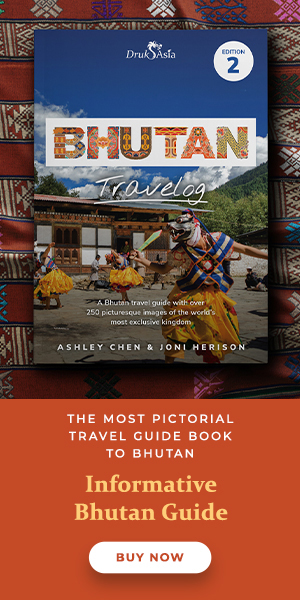BHUTAN
Travelog
How to Travel Within Bhutan: The Essential Guide for Tourists

Visiting Bhutan is a journey like no other. With its majestic mountains, vibrant monasteries, and tranquil valleys, Bhutan promises an unforgettable adventure. But navigating this Himalayan kingdom can be quite different from travelling elsewhere in Asia. Whether you’re planning your first trip or returning for a deeper experience, here’s everything you need to know about travelling within Bhutan.
Getting Around Bhutan: What You Need to Know
Bhutan’s Unique Geography
Bhutan is renowned for its dramatic landscapes—steep valleys, winding mountain roads, and remote villages. Because of this, overland travel can be slow, but the views are always rewarding.

Do You Need a Tour Guide or Driver?
For International Tourists:
Most tourists travel with a licensed Bhutanese guide and driver, as part of a pre-arranged tour. This is not only recommended but, in most cases, required by the government especially if you're planning to visit iconic dzongs (ancient fortresses) and sacred monuments.
A tour operator handles everything for you—accommodation, transport, permits, guides, meals, and itinerary—saving you hours of research and coordination.
Engaging a Tour Operator for Private Tour Guide and Driver
Check out the popular Bhutan tour packages.
Modes of Transport Within Bhutan
Private Car with Driver
The most common and comfortable way to get around is in a private vehicle with a driver. Your tour agency usually arranges this for you. Vehicles range from sedans to spacious vans or 4x4s, depending on your group size.
Benefits: Door-to-door convenience, flexibility with sightseeing, and a local driver who knows the roads and weather conditions.
Chaffeur Services in Bhutan
For car rental with chaffeur services in Bhutan, check out avis.bt.
If you would like to self-drive in Bhutan, kindly contact avis.bt for more information.
Driving Your Own Vehicle:
Foreign tourists driving their own vehicles (such as those entering from India) must comply with strict requirements, including permits and documentation, and pay applicable fees.
If your International Driving Permit (IDP) isn’t recognised in Bhutan, you’ll need to obtain either a temporary or official foreign driving licence. Bhutan offers two types of licences for foreign nationals:

Domestic Flights
Bhutan has several domestic airports: Paro (PBH), Bumthang (Bathpalathang), and Yongphulla (for eastern Bhutan). Domestic flights, operated by Drukair and Bhutan Airlines, can save considerable travel time, especially if you wish to visit Bumthang or eastern Bhutan.
Inter-District Buses
For budget travellers, government-run buses connect major towns such as Thimphu, Paro, Punakha, and Phuentsholing.
Pros: Affordable and a chance to mingle with locals.
Cons: Less comfortable, limited schedules, and longer journey times.
Taxis
Taxis are available in Thimphu, Paro, and other towns. Always agree on a fare beforehand or ensure the metre is used. For intercity journeys, it’s best to arrange a price in advance.
Walking & Trekking
For many, the best way to see Bhutan is on foot. Guided treks, ranging from gentle walks to challenging multi-day hikes (like the Druk Path or Jomolhari Trek), offer access to spectacular scenery and hidden villages.
Sample Travel Times Between Popular Bhutanese Destinations
Paro to Thimphu: 1.5 hours (54 km)
Thimphu to Punakha: 2.5–3 hours (85 km, via Dochula Pass)
Punakha to Gangtey (Phobjikha): 3–4 hours
Thimphu to Bumthang: 8–10 hours by road, or 35 minutes by flight
Note: Mountain roads are winding and speeds are slow. Always factor in extra time for scenic stops!
Tips for Travelling Within Bhutan
Plan Your Itinerary Carefully: Due to Bhutan’s road conditions and distances, don’t try to squeeze too many destinations into a short visit.
Travel During Daylight: Mountain driving is best done during daylight hours for safety.
Prepare for Delays: Landslides or roadworks (especially during the monsoon) can cause unexpected delays.
Carry Essentials: Food, water, and any medication—long drives may have limited stops.
Sustainable Travel in Bhutan
Bhutan’s “High Value, Low Volume” tourism policy encourages responsible travel. Hiring local guides and using Bhutanese transport services not only makes your journey smoother but also supports local communities.
Frequently Asked Questions
Can I rent a self-drive car in Bhutan?
No, self-drive car rentals are not available for international tourists. Travelling with a driver is standard practice.
Is public transport reliable?
Public buses are reliable but basic. For comfort and convenience, a private vehicle is best.
Are roads safe?
Roads are generally safe, but can be narrow and winding. Only experienced local drivers should attempt them.
Can I travel to eastern Bhutan?
Yes, but travel to remote areas must be arranged through a licensed tour operator, and some permits may be required.
Are There Trains in Bhutan?
Bhutan does not have any train services or railway lines. All overland travel within the country is by road, whether by private vehicle, bus, or taxi. The nearest railway stations are in India, such as in Hasimara and Siliguri, for those entering Bhutan overland via the Phuentsholing border.
Kickstart Your Bhutan Adventure
Travelling within Bhutan is part of the adventure—each journey is a chance to witness breathtaking landscapes, visit ancient monasteries, and experience daily life in the Land of the Thunder Dragon. With the right preparation and a flexible attitude, you’ll find that getting around Bhutan is not just about the destination, but the journey itself.
Follow Druk Asia on social media for inspiring travel stories, breathtaking photos, and the latest updates from Bhutan.
Ready to Experience the Magic of Bhutan?
Fill in the form below and the friendly Bhutan Travel Specialist team will get back to you with expert advice, itinerary ideas, and everything you need to know. No obligations, just warm guidance from those who know Bhutan best.
Thank you for your message!
Hang tight—one of our friendly Bhutan Travel Specialists from Druk Asia will be reaching out soon with expert tips, insider advice, and exciting itinerary ideas to help you plan the adventure of a lifetime!
Discover
Breathtaking
Bhutan.
Thank you for subscribing!
You have successfully subscribed to our newsletter.




